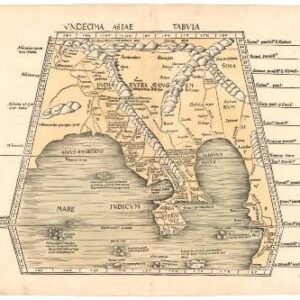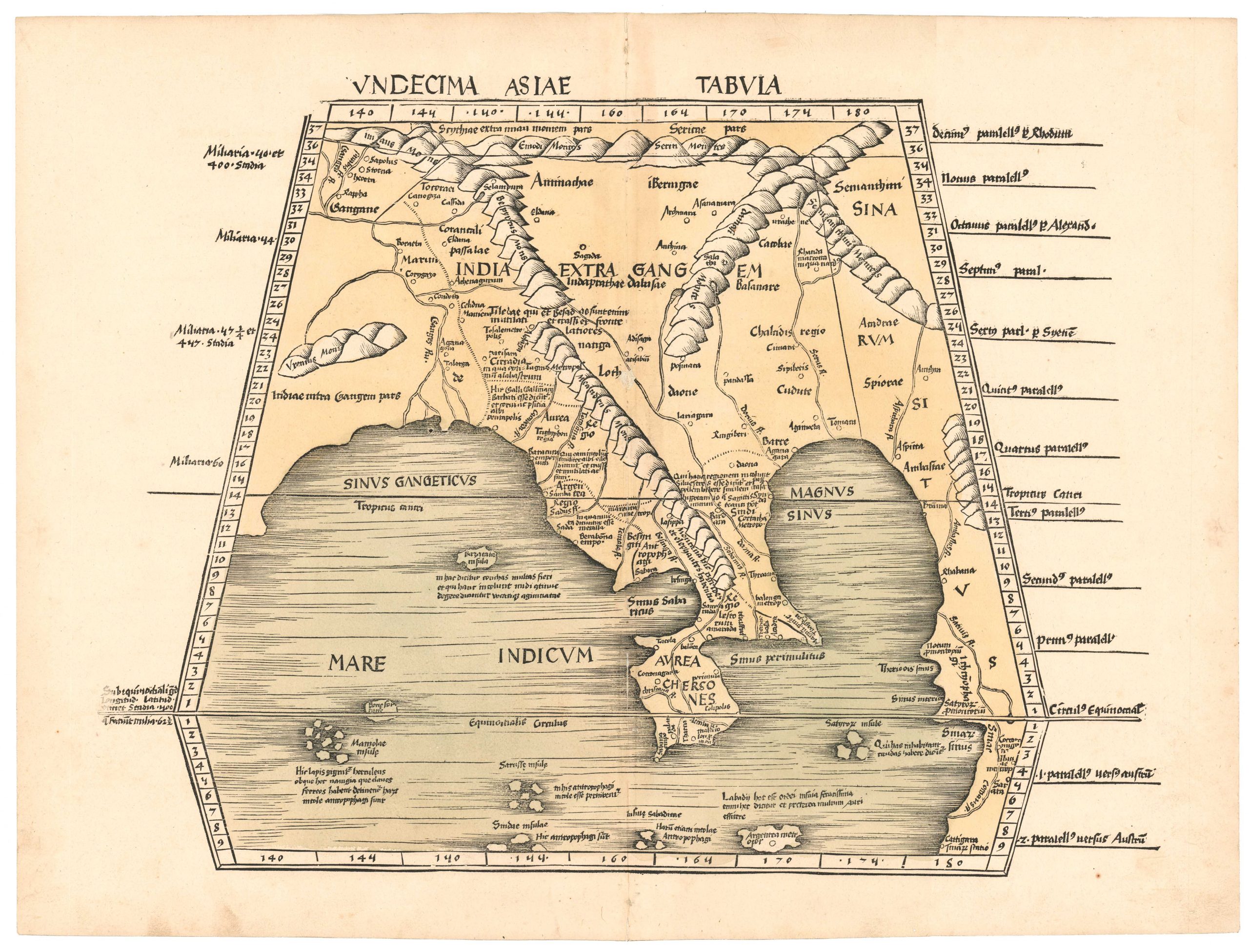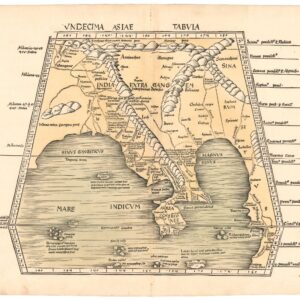Admiralty Chart of the Hai River with manuscript additions suggesting use in the field during the Second Opium War.
River Pei-Ho From Gulf of Pe-Chili to Pekin
$1,900
1 in stock
Description
This remarkable map was published in 1857 by the British Admiralty Hydrographic Office. It follows the Hai River (Pei-Ho on the map) from Bohai Bay (Gulf of Pe-Chili) past Tianjin (Tien-Sing), and on to Beijing (Peking). Already an interesting map on its own merits, it is the addition of two sets of hand-written annotations that makes a historical document unlike any other. The detailed annotations follow the decisive moments of the culminating stage of the Second Opium War, in which British and French troops pushed up the Hai River towards Beijing.
The Second Opium War, also known as the Arrow War, was a military confrontation pitting the United Kingdom and the French Empire against the Qing dynasty of China. It lasted from 1856 to 1860. It was the second major war in the Opium Wars, fought over issues relating to the exportation of opium to China, and resulted in a second defeat for the Qing dynasty. The agreements of the Convention of Peking led to the ceding of Kowloon Peninsula as part of Hong Kong.
The manuscript additions are in old ink and pencil, in the French language, and our hypothesis is that they were done by a French military officer or diplomat who was on the ground during the events of the Second Opium War. The date and scope of map mean that it shows the theater of the war at exactly the moment it had shifted north following the British and French capture of Canton at the end of 1857. The detailed notations were done by a careful had, perhaps that of a surveyor, and include new roads, river systems, villages, tides, and more.
The French word for the month of August, août, appears among the annotations. While we cannot be sure, it is very possible that they were written in the year 1860. August, 1860, saw the Third Battle of Taku Forts, which are circled on the map. This was was one of the last major engagements of the Second Opium War. The French approached from the village of Sinho past Chin-ku, the road to which has been added to our map in brown ink. On August 12th, British and French forces began advancing, their progress slowed by the series of fortifications and ditches. After two weeks the main fort surrendered. It was a decisive moment in the war: the river route to Peking was now open and the Chinese authorities capitulated all 22 forts along the river as far as Tianjin.
After the surrender of Taku Forts, the combined Anglo-French force marched in a leisurely manner towards Tianjin, which was reached on 1 September 1860. A pencil mark on the route with the date 31 août would seem to fit this timeline. Further annotations suggest an extended stay in Tianjin, which is exactly what the French and British forces did. From there they began negotiations with Peking, but when these negotiations broke down, they advanced on the city and defeated the Qing army at the Battle of Palikao on September 21, 1860. The Xianfeng Emperor fled the capital, leaving his brother, Prince Gong, to be in charge of negotiations. Prince Gong ratified the June 1858 Treaty of Tientsin in the Convention of Peking on 18 October 1860, bringing the Second Opium War to an end.
Cartographer(s):
The United Kingdom Hydrographic Office is the British Admiralty’s agency for creating and supplying hydrographic and marine geospatial data. The Admiralty’s first Hydrographer was Alexander Dalrymple, who was appointed in 1795 on the order of King George III. Among his tasks was cataloguing the existing charts into a royal cartographic library. Dalrymple was succeeded in 1808 by Captain Thomas Hurd, under whose stewardship the department was given permission to sell their maps to the public. By 1825, more than seven hundred different charts and coastal views were for sale from the Hydrographic Office.
In general, hydrographers have played a key role in the development of cartography. It was hydrographers who first began calculating the effects of magnetic declination on navigation, and hydrographers who drew the first maps that tried to compensate for this effect in their rendition. The British Hydrographic Office introduced a number of important features, such the use of an eponymous scale or the inclusion of tide tables in nautical charts, which soon became standard features. The Hydrographic Office also mounted or co-sponsored along list of expeditions across the globe, including Charles Darwin’s voyage with the HMS Beagle.
Condition Description
Soiling and age toning that suggest use in the field. Dissected and mounted on linen and divided into 9 parts.
References




![[Pair of views] Rade et Ville de Sincapour & Rade de Sincapour prise de la maison du Gouverneur](https://neatlinemaps.com/wp-content/uploads/2021/03/NL-00896-harbor_Thumbnail-300x300.jpg)
![[Pair of views] Rade et Ville de Sincapour & Rade de Sincapour prise de la maison du Gouverneur](https://neatlinemaps.com/wp-content/uploads/2021/03/NL-00896-harbor_Thumbnail.jpg)
![[Political broadside] Solidarity with the People and Students of the DPR of Korea.](https://neatlinemaps.com/wp-content/uploads/2022/10/NL-01603_thumbnail-1-300x300.jpg)
![[Political broadside] Solidarity with the People and Students of the DPR of Korea.](https://neatlinemaps.com/wp-content/uploads/2022/10/NL-01603_thumbnail-scaled.jpg)
![[Political broadside] Solidarity with the People and Students of the DPR of Korea.](https://neatlinemaps.com/wp-content/uploads/2022/10/NL-01603_thumbnail-scaled-300x300.jpg)